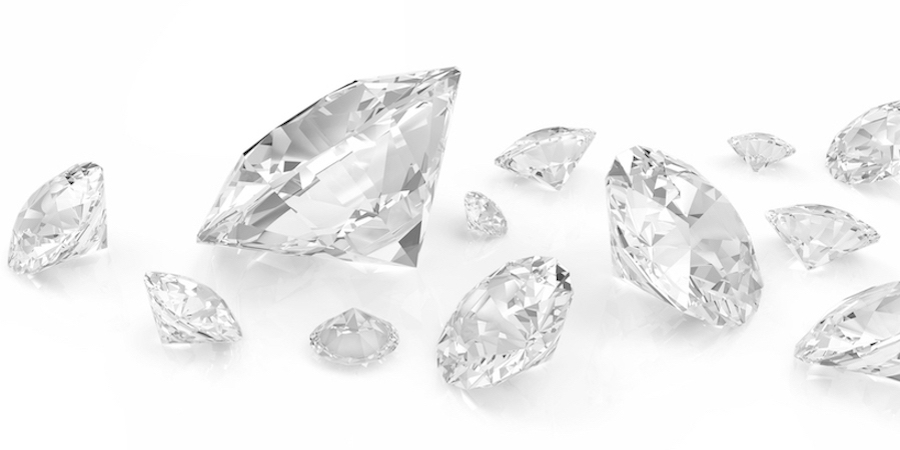
The name Diamond derives from the Ancient Greek 'Adamas' meaning ‘Unconquerable.' Warriors in ancient Greece wore diamonds as the stones were thought to strengthen the warriors’ muscles and bring them invincibility.
Diamonds were formed over 3 billion years ago, under conditions of intense heat and pressure that exist only within a specific depth beneath the earth’s surface. A mined diamond is not yet a polished diamond; it must be processed to achieve a shine and sparkle. When a diamond is mined, it is called a rough. Rough diamonds will be designed, cleaved or sawn, and cut expertly by machines to ensure that the best color, sparkle, and facets shine through. Once this is done, they will be polished to perfection ready to be used to craft jewelry. By the time a diamond is set into jewelry, it will have lost about half of its original weight.
A chemically pure and structurally perfect diamond is completely transparent with no hue or color. It is the only gem made of a single element, typically about 99.95 % carbon. The other 0.05 percent can include trace elements, which can influence its color or crystal shape. Because of these impurities, such as nitrogen and boron, diamonds can also be found in other colors such as yellow, brown, pink, green, black and even rarer and valuable colors like blue and red. These are called Fancy Colored Diamonds.
Diamonds are rated as ten on the Mohs scale, which means they are the hardest known mineral on earth and can only be modified by other diamonds. Because of their hardness and thermal conductivity, they are extremely useful and utilized in major industrial applications such as cutting and polishing tools.
A diamond is highly regarded for its beauty and ability to reflect light in an extremely dazzling way. A diamond’s sparkle is a combination of three different components: fire, brilliance, and scintillation. Fire is the colorful flashes that happen when a diamond disperses light. Scintillation is the flashing between light and shadow, which gives the blinking effect you love in a glittery stone. And brilliance is the white flashes or white light return when it hits the light.
Diamonds come in different shapes. Each shape has different and unique characteristics that come to determine its specific quality. A diamond’s cut and its shape are often confused. A diamond’s shape refers to the general silhouette of the stone, its outline when viewed face-up. A diamond’s cut refers to its facet arrangement.
No matter how beautiful a diamond may look, you simply cannot see its true quality. Until the middle of the twentieth century, there was no agreed-upon standard by which diamonds quality could be judged. This is why, over the years, a universal standard for identifying diamonds has been set. GIA created the first, and now globally accepted standard for describing diamonds: The 4Cs and the International Diamond Grading System™.
Besides natural diamonds, many diamond alternatives have come to the market in recent years: Treatments, Synthetics, and Imitations. They are less valuable and therefore must be clearly declared in the trade, as well as to the final consumer.
Treatments, also known as enhancements, refer to any process other than cutting and polishing that improves the characteristics and appearance of the color and clarity of natural diamonds.
Synthetics, also known as, lab-grown diamonds are identical to natural diamonds in their chemical, physical and optical properties, but they are grown and manufactured in laboratories in different methods, meaning they are man-made and not earth mined.
Simulants, also known as imitations, refer to any materials (natural or man-made) that closely resemble natural gemstones. They have the same appearance but do not have the same chemical, physical, and optical properties of natural gemstones.
"Antwerp, the diamond capital of the world."
For over five centuries, Antwerp is the heart of the global diamond trade. It is the largest and leading diamond center throughout the globe. Over 85% of the world’s rough diamonds and 65% of the world’s polished diamonds are traded here, making an annual turnover of $ 40 billion.
Diamond is the birthstone for April and the gem for the 60th and 70th anniversaries.
DOWNLOAD THE 4CS OF DIAMOND QUALITY
DOWNLOAD DISTINGUISHING NATURAL DIAMONDS